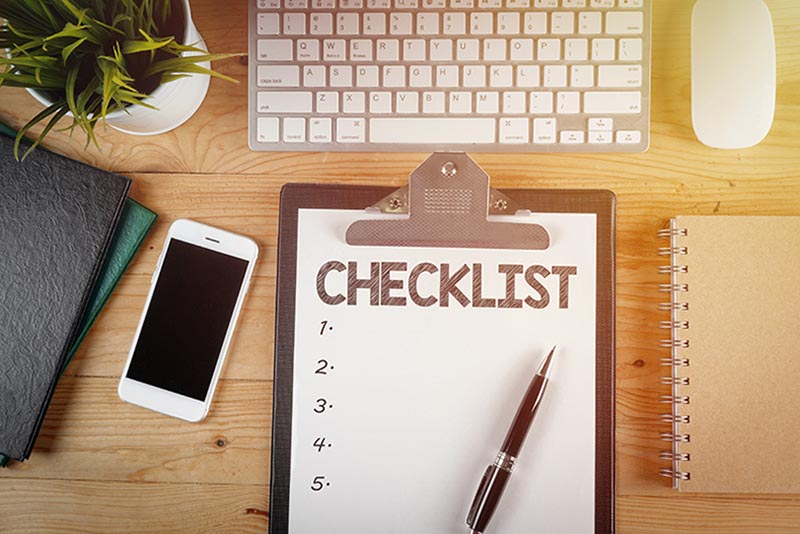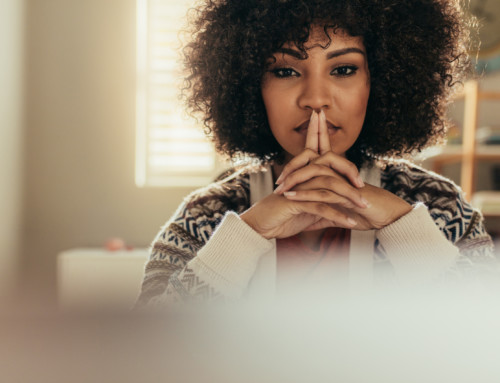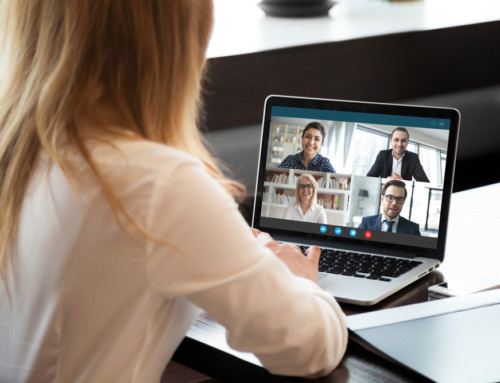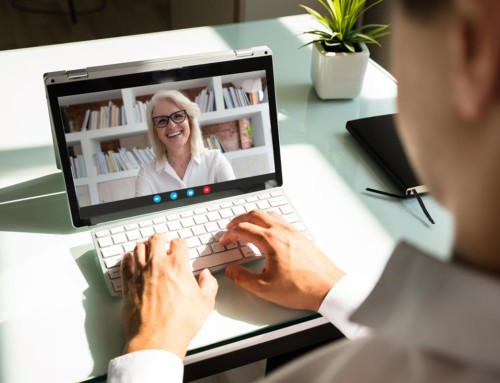Protect your patient pipeline with virtual appointments during the coronavirus crisis shutdowns and beyond
Virtual appointments also referred to as telehealth, have transformed how healthcare providers interact and exchange information with patients. Before the Coronavirus, they were already becoming a standard feature in today’s society – particularly the health sector.
Today, they are a must. And, you can rest assured they will become a part of the phase called “The New Normal” after the worst of this crisis is over. (Check out this post on the 5 phases impacting your revenue during the Coronavirus crisis, to get up to speed on what The New Normal phase will be about and why virtual appointments will factor heavily at that time.)
3 goals of a virtual appointment
In one short 15 to 20-minute virtual appointment, you can deliver a valuable and accessible service that will achieve three important goals:
- Maintain your patient pipeline
- Convert your prospective patient to the next available face-to-face appointment
- Create a waitlist for your elective surgery services for when re-open your clinic
What equipment will you need for virtual appointments?
- a smartphone, tablet or computer with either a built in camera or attached web cam
- a built-in microphone or attached microphone (mobile headphones will work well for this purpose too)
- video conferencing software (i.e. Zoom)
If you’re anxious about offering virtual consultations, don’t be. The NHS England has even announced that it intends to support local NHS GP practices to offer their patients alternative ways to have a consultation with a GP or other practice-based health professional.5
Help your practice survive Coronavirus
SCHEDULE A FREE 15-MINUTE CHAT
Your business has completely new challenges today in light of COVID-19. Let’s chat about how you you can quickly change your plan and your patient messaging to be in sync with the 5 phases your market is going through right now. You cannot act as though this is business as usual. Let’s have a quick chat to get your practice protected
Advantages of virtual appointments?
A study has found that participants felt more confident talking about a personal issue via an online video call rather than face-to-face. They also valued the privacy and convenience of talking to a professional within a familiar environment of their choice.6
To offer effective virtual appointments, you first need to have the right elements in place…
The virtual appointments checklist – What you need to have in place to effectively run appointments online

Security and privacy
The same good practice principles apply as much to online video consultations as to any other consultation.
Doctors (or those work for them) must:
- Obtain adequate patient consent
- Ensure patient confidentiality
- Keep contemporaneous notes
- Make an appropriate assessment of the patient’s symptoms
- Communicate with other doctors to ensure continuity of care
- Have appropriate indemnity
The patient should also be made aware of the limitations of clinical assessment by remote consultation and also of any potential security risks associated with the consultation taking place via the internet.
For all the legal aspects of online consultations, we recommend these websites:
Environment and equipment

Environmental requirements are the same as those for a normal consulting room (i.e. a quiet room that is private and large enough for 2-4 people). The decor should be plain so as not to distract from the visual image on the screen and lighting should be good.
If your computer hasn’t got a decent built-in camera or audio, a high-quality webcam with a built-in microphone is the next best option. It’s worth noting that you can improve the audio quality by using headphones with a microphone as this will prevent an echo.
Many medical specialists have found it easier to consult using a laptop computer that is separate from their desktop computer. This enables separate access to the patient records and allows you to take notes during a consultation. But it’s up to you how you want to do it.
Screen set up
- Grab a chair and something to put your laptop on (like a small desk or stand) and position it about an arm’s length away from you
- Position the camera just above your eye line, slightly pointing down
- Connect your laptop to a power source
- Do a quick test to ensure that the the microphone and camera are functioning correctly
- If part of your face is cast in shadow, use a lamp to spread the light evenly and ensure your facial features are clear
Check your background
Are you happy with what’s in the background? If not, you can upload a customised background on Zoom. In this video, Rod shows you how:
You might have a photo of your clinic set up. If you don’t, we’ve made an eye clinic background you can use. Grab this background photo that Rod’s using in the video above.
Internet connectivity
Although it sounds obvious, a poor internet connection can result in video and audio issues or even total session disruption. To maintain professionalism, you’ll need a minimum data speed of 256 Kbps in each direction (upload and download).
Choose your platform
When you’re just starting out, Skype is a great low-cost entry point to the world of online consultations. Given that there are no significant upfront costs and no upfront contracts, the business risk is small. As demand and usage increases, it may be worth switching to a professional software solution to ensure sustainability and quality of service.
For example, we at LiveseySolar use Zoom.us. Zoom is a reliable and user-friendly web conferencing software with all of the features we need to conduct dozens of online meetings a week with our customers. Furthermore, it plays well with our diary system (Google Calendar) and our online booking software (Calendly). Zoom even has a version they’ve prepared specifically for telehealth, that they claim:
“reliably delivers consistent clinical user experiences, seamlessly integrates into your technology and workflows, and keeps you connected and compliant. With high quality video, even in low-bandwidth environments, organizations can support healthcare teams and patients around the globe.”
Check out their healthcare datasheet here.
Always have a back-up option. If the connection drops, the show must go on. Having the patient’s phone number to hand will help you tie the conversation over until things are back up and running. However, be aware that certain aspects of communication, such as non-verbal cues will be lost, which could lead to misunderstandings between you and the patient.
Don’t record the consultation unless you have a specific need to do so (i.e. transcription). Although it may seem like a bright idea, policy on recording video consultation states that it is best only to collect health information that is necessary to manage a patient. This is to protect their privacy. If you choose to record consultations, inform patients you will record them in a privacy policy and dispose of the recordings in a timely manner (according to your GDPR policy).
Help your practice survive Coronavirus
SCHEDULE A FREE 15-MINUTE CHAT
Your business has completely new challenges today in light of COVID-19. Let’s chat about how you you can quickly change your plan and your patient messaging to be in sync with the 5 phases your market is going through right now. You cannot act as though this is business as usual. Let’s have a quick chat to get your practice protected
The perfect online consultation agenda
Now that you have everything set-up, it’s time to practice the online consultation. You might be thinking, ‘Pftttt, I do this stuff day-in-day-out, I think I know how to handle a consultation!’ But these ones can feel a little different, so it’s always wise to have these notes to hand in case you drift off track. Remember, you only have 15 minutes!
Make a positive first impression
The purpose of the first impression is to establish rapport and instil trust and credibility. Dress smart, introduce yourself and ask the patient how they are. If you can, make a little small talk to make the patient feel at ease. This will help to reduce the patient’s tension and help them feel relaxed.
Communicate your intent
Following the ‘warm-up’ conversation and preceding a discovery, an intent statement is a rehearsed statement in the form of an agenda for an appointment that outlines expectations for the goal of the appointment. Intent statements also contain statements designed for demonstrating empathy, takeaway statements designed for reducing pressure, and trial close statements designed to get agreement.
Discover your patient’s before-state and desired after-state
Through a series of questions, you can figure out which treatments or tests might be most effective to your prospective patients based on their particular needs and objectives.
Confirm the information you’ve discovered
The purpose of the information confirmation is to show the patient that you have listened and understood their problems, motives and goals. Summarise their response and confirm that they have come to the right place.
Make a convincing recommendation
The recommendation is a clear description that you make to the patient regarding their probable suitability, the test or treatment you recommend, the risks and downsides associated with the treatment/ test, the benefits and prospective outcomes the prospective patient can expect, and any further clarifications on the plan for treatment/ tests.
It is usually at this point when objections surface, so handling objections is a vital part of this stage. We share how to do this in a way that there is no pushiness or conflict between you and the prospective patient here: Healthcare Consultation – Objections: measure twice, cut once.
Close on the next step: a face-to-face meeting
If you have a core offer for the patient (i.e. tests or treatment that you can only perform in person) the next step is to invite the patient in for a face-to-face appointment. Only do this once you have identified and overcome all service and situational objections. This step is usually considered the “closing” stage.
Here, it would help if you offered the prospective patient options relating to their availability and preferences. Presenting a maximum of two date and time options gives the prospective patient the necessary sense of control and choice that they require to make a decision.

And viola! You have secured yourself another invested patient who is firmly on the road towards treatment. And of course, what better way to secure online consultations, than via easy online booking systems.
Since helping one of our clients install this simple online scheduling tool on their website, they have leapt from 40 enquiries a month to over 170 online bookings. We did our research, and after carefully assessing and comparing the top online booking system software, we found the perfect one for doctors. Check it out here: Doctors can triple conversions overnight with easy online booking software – Your short guide to a more flexible and functional private practice.
Help your practice survive Coronavirus
SCHEDULE A FREE 15-MINUTE CHAT
Your business has completely new challenges today in light of COVID-19. Let’s chat about how you can quickly change your plan and your patient messaging to be in sync with the 5 phases your market is going through right now. You cannot act as though this is business as usual. Let’s have a quick chat to get your practice protected:
Why subscribe?
If you like our content but feel too busy to remember to keep coming back to our blog just in case we’ve published a new post, subscribe and you too will receive weekly notifications linked to relevant and timely advice about how to build the practice and life you’ll love. We’ll also throw in some subscriber-exclusive content that will enable you to stay ahead of the competition. We’ll keep your email address private and you can unsubscribe at any time.
Subscribe and get:
- Powerful tips in succinct and timely articles
- Insightful interviews that educate and inform
- Useful videos that show you how to grow your practice
- Invites to interactive webinars that teach real-world techniques
- Case studies that show you how we reliably grow your colleague’s practices
Do you use Facebook?
Like and follow our Facebook Page HERE to grow your private healthcare clinic with hundreds of other healthcare marketers.
If you enjoyed this post, you can also get updates from us. We’ll send email updates about new posts, and tips and tricks to build the practice and life you love. Just sign-up as a blog subscriber and you’re good!
Can I make a tiny request?
I know most people don’t share blog posts because they feel that us bloggers don’t need their “tiny” social share. But here’s the truth…
We built this blog piece by piece, one small share at a time, and we will continue to do so. So, thank you so much for your support, dear reader.
A share from you would seriously help a lot with the growth of this blog. It won’t take more than 10 seconds of your time. The share buttons are right here. 🙂








